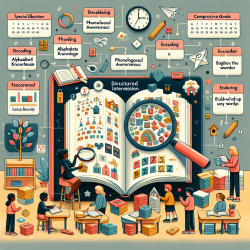Introduction to Dyslexia Interventions
Dyslexia is a common learning difficulty that affects a student's ability to read and spell. It is crucial for educators to have effective intervention strategies in place to support these students. The Dyslexia Intervention Lesson Plan Template provides a structured approach to teaching literacy skills, ensuring all recommended strategies are covered while allowing for individualized instruction.
The Lesson Plan Template: An Overview
The lesson plan template is designed to guide educators through the sequential implementation of skills within a succinct lesson. It is not a one-size-fits-all solution, but rather a framework that should be adapted based on the individual needs of students, informed by progress monitoring and diagnostic assessments.
Lesson Components
The lesson is divided into several key segments:
- Review: Begin each lesson by reviewing previously learned skills such as phonological awareness, sound-symbol relationships, decoding, and encoding. This segment should last 5-8 minutes and can be cumulative or targeted.
- Lesson Opening: Clearly state the goal of the lesson and its relevance to the students. This sets the stage for learning and should take 2-3 minutes.
- New Skill Instruction: Explicitly teach new skills using multisensory engagement strategies. This segment, lasting around 15 minutes, may include components such as phonological awareness, alphabet knowledge, decoding, and encoding.
- Extended Practice: Engage students in practice activities to develop fluency with previously taught skills. Allocate about 5 minutes for this practice.
- Spelling (Encoding): Focus on writing and spelling sound-symbol relationships in isolation and decodable words. This segment should last about 5 minutes.
- Sentence or Text Reading: Provide opportunities for students to practice reading decodable sentences and texts, where they can sound out the majority of words. This should take 5-8 minutes.
- Lesson Closing: Conclude the lesson with an interactive review of the new skills taught and preview the next lesson. This should last 2-3 minutes.
Multisensory Components
Incorporating multisensory components is vital in dyslexia interventions. These can include visual, auditory, kinesthetic, and tactile strategies. Consider using songs, mnemonic devices, or physical activities like tapping or clapping to reinforce learning. Visual aids can also help connect new skills to previously taught ones.
Monitoring Progress
Progress monitoring is essential and can occur before, during, or after the lesson. Collect data to determine which skills students have mastered, which need additional review, and which require explicit instruction. This data-driven approach ensures that instruction is tailored to meet each student's needs.
Conclusion
By following the Dyslexia Intervention Lesson Plan Template, educators can provide structured, individualized support to students with dyslexia. This approach not only enhances literacy skills but also builds confidence and fosters a love for learning.
For more information, please follow this link.










